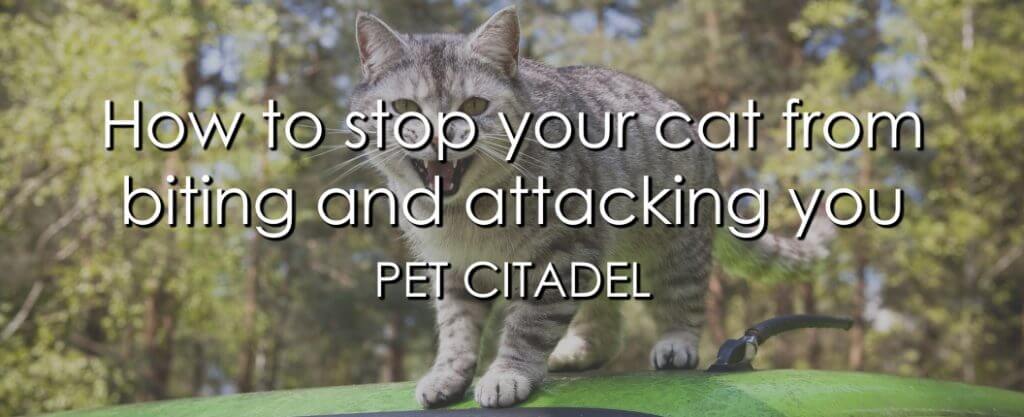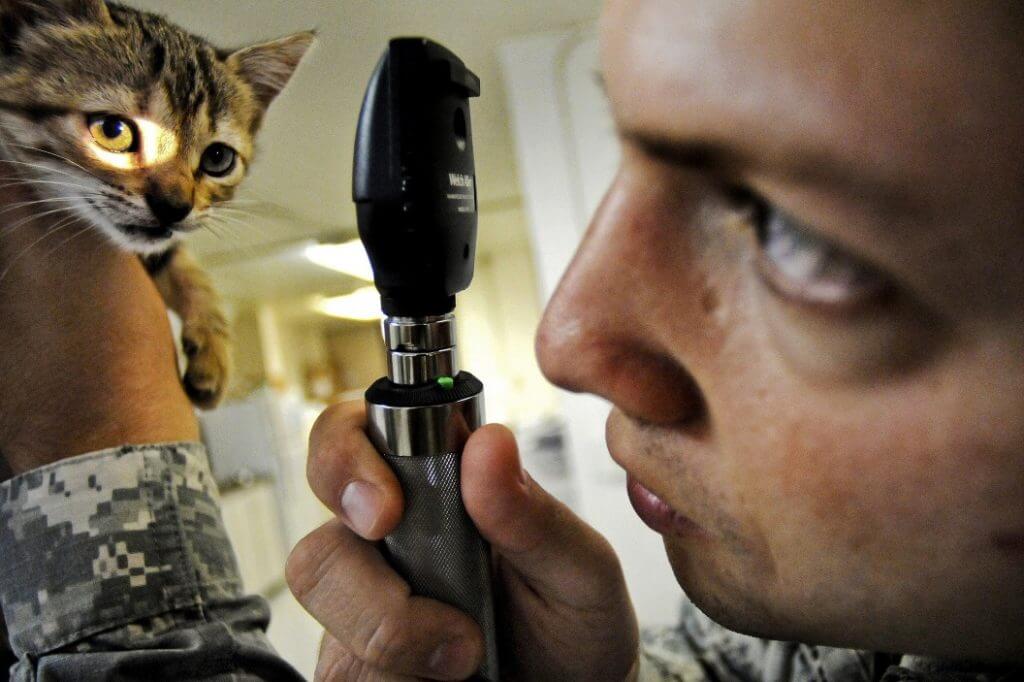This post may contain affiliate links. You can view our affiliate disclosure here.

Has your cat turned into a biting and scratching monster? Rest easy at night knowing that this is a fairly common issue, particularly when the cat is young.
There are ways you can stop such aggressive behavior. Your cat might be attacking you because of a behavioural or medical issue.
Cat bites and scratches are not only painful, but can also lead to the transmission of diseases. They can lead to a bacterial infection known as cat-scratch disease, which is caused by the bacteria Bartonella henselae.
If you have unexplained fever or flu after a cat bite or scratch, you need to seek medication immediately. A cat bite or scratch infection that is not well-treated can cause death.
Know that there are risks if you fail to put effort into stopping your cat’s biting tendencies.
As cat owners, we should know how to handle our cats when they’re aggressive, not just when they’re calm or playful.
If you want to get your cat to stop biting and attacking you, here are our best tips:
1. Understand the reason for the biting.
Cats are predatory, and so it might be seeing you as prey when it attacks you. It might be attacking your ankles to show its predatory instincts.
Your cat might also be lacking environmental stimulation such as toys to keep itself busy. When your cat is bored, it might start looking for something to play with, and unfortunately, it may choose your ankle or some other part of your body.
You need to know the specific type of aggressiveness your cat has to understand the cause and develop a plan to remedy it. The following are the general categories of feline aggression:
1. Play Aggression

This is common in young kittens that didn’t get enough time to play with their littermates.
The best way to deal with play aggression is by walking away — this signals to your cat that aggressive playing means no more play.
2. Fear Aggression
This occurs when the cat encounters unfamiliar stimuli such as a noise, a new pet, or a new person.
The best way to deal with fear aggression is by avoiding situations that produce a fearful response.
3. Petting-Induced Aggression
Some cats become aggressive when you try to pet them. One of the ways to avoid this is by not interrupting it when it is eating and avoiding uninvited or unexpected petting.
4. Pain-Induced Aggression
If your cat is in pain, it may attack you when you try to touch it or do something that worsens the pain.
Refraining from touching the sources of the cat’s pain is the best way to deal with this type of aggression.
5. Territorial Aggression
This occurs when you introduce a new cat. To avoid this, provide each cat with its own litter box, water, and food.
6. Maternal Aggression
If your cat has recently given birth, it might start attacking whoever comes close to her kittens. During this time, try to avoid approaching them, or do it carefully.
This type of aggression subsides as the kittens grow older and become independent.
2. Work closely with your vet.

If your cat suddenly starts attacking you, it might be a behavioural problem. You should have your cat examined by a vet to help determine whether it is a behavioral or health issue.
In fact, most unprovoked cat aggression is due to behavioural problems. Continue with the following steps after getting verification from a vet that it isn’t behavioural:
3. Learn to read and interpret your cat’s body language.

You need to distinguish when your cat is viciously aggressive and when it is playing. Some of the signs of aggressiveness in cats include:
Signs Of Fear In Cats
- flattened ears
- dilated pupils
- whiskers flattened to the face
Signs Of Aggressiveness In Cats
- dilated pupils
- crouched or tense body posture
- hissing, spitting, and growling
- twitching or thrashing tail
- ears backward
Whenever your cat shows the above signs, stop playing with it. Also, don’t look at your cat directly when it’s ready to attack, as this may come across as you wanting to fight back.
You should always avoid making eye contact with your cat when it is aggressive.
4. Don’t punish your cat.
If your cat is aggressive rather than playful, respond calmly. Never respond to your cat’s aggressive behavior violently. Hitting and shouting at your cat won’t help the situation — it might think you are fighting back.
Cats don’t have the same mental capacities and reasoning capabilities as humans. Punishing it after an attack will likely make things worse since the cat doesn’t know why it is being punished.
If your cat scratches or bites you, don’t strike it or run. Instead, walk away and don’t respond in any way. Hitting it or shouting might make it more aggressive.
If it has its teeth on your skin, pulling away firmly but gently is best; shouting or running may make it bite harder.
5. Stimulate your cat mentally.

Stimulating your cat mentally by playing with it will help keep your cat busy. The best way to do this is by providing it with a variety of toys.
Make sure your cat is not playing with the same toy over and over. Give it new things to explore every once in a while, and when your cat is well stimulated, it may lose interest in biting or attacking you.
6. Quit using your bare hands as toys.
Wagging your fingers back and forth in front of the face of your cat to entice it to play can be dangerous. Doing this may make it think that it’s okay to bite your skin.

When it’s a kitten, its bites and scratches may not be painful, but remember that it will one day be a full-grown adult. Establishing boundaries throughout the cat’s life will cause it to stop taking your hands, feet, and other body parts as toys.
While making your messaging as consistent as possible, keep teaching your cat that biting human flesh is not okay.
7. Find time to play with your cat.
Try to schedule two to three 10-minute playing sessions a week with your cat. Spending time with your cat will enable you to instill proper behaviours (like not biting people) that will last for the long term.
To keep your hands and feet safe from your cat, go to your local pet shop and buy dangling toys or pole type toys. If your cat loves wrestling, buy it animal toys that are of its size.
Providing your cat with the right toys and playing with it will help foster its natural predatory instincts without posing any threat to you.
Conclusion
Attacking and biting behaviour from your cat is something that you want to try to rectify as soon as possible. It can not only harm you (wounds and potential bacterial infections), but it can also harm your cat and endanger other people and animals around it.
We recommend employing one or more of the strategies above based on your unique situation and what you think the cause of the behaviour is.
If something doesn’t seem to be working, try something else. Different cats will respond differently to any given method. Remember that a qualified vet is just a phone call away.
Do you have a problem with your cat attacking you? Do you have any questions? Feel free to share your thoughts in the comments below!



